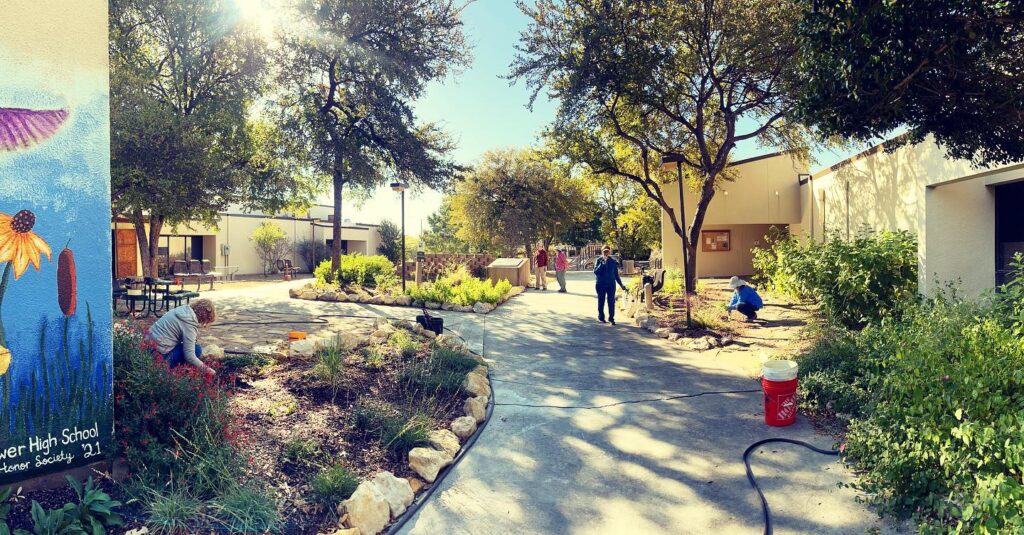
Garden Leaders: Avon Burton and Marcie Delgado
- Garden Days: Every Wednesday 9am to 11am, 4th Saturday, to be driven by expressed interest.
- 8213 White Settlement Rd, White Settlement, TX 76108
- In the courtyard between the Senior Center, Recreation Center, and playground. The White Settlement Library shares our same parking lot. A weekly email communicates our plans for the week, if interested, request to be added to the distribution list.
Mission
To attract and support local butterflies, Monarch butterflies, native bees, and other pollinators and to provide educational tools and volunteer opportunities that appreciate the positive impacts of native plants in the urban landscape.
Description
The Garden does this by establishing a welcoming entrance to the linear park space and municipal office complex. As a beautiful focal point & serene meeting place, the White Settlement Monarch Waystation celebrates the ability to provide a peaceful urban place focused on Texas native plants. The native plants provide aesthetic appeal for city residents and visitors while attracting necessary pollinators to the area. Positioned along the Monarch Highway, the Garden is also designed to support the local butterfly population as well as the migrant Monarch Butterfly. As a certified Monarch Waystation, the garden presents the components necessary to assist the Monarch on its migration through the state of Texas. The Garden is designed, grown, and cared for by dedicated expert volunteers from the North Central Chapter of the Native Plant Society of Texas (NPSOT). It offers access for personal volunteer involvement and participation to all in the community.
About
A demonstration garden for public visibility and interaction could not be more ideal. It is centrally located at Waggoman Park, an 8.5 linear park and greenbelt park area along the east end of the Farmers Branch floodplain through the middle of the municipal complex and directly services a community of almost 20,000. The garden is intimately situated between the Senior Center, Recreation Center, Chamber of Commerce, and is naturally found by visitors to city hall. A footbridge across a spring fed segment of Farmers Branch creek connects the garden to city offices as well as the local fire department. In addition, a gated playground, library, and community garden are present. The White Settlement Museum is also accessible nearby, allowing for additional educational opportunities and future partnerships. It is no understatement that this garden will garner a great deal of public visibility to a diverse array of audiences visiting for events, services, and educational opportunities. The Complex features ample parking for events and visitors. The primary parking lot is located directly in front of the city complex. It is highly visible from White Settlement Road and not easily missed. This lot is large, paved, and features multiple curb cuts for handicap access and egress. There are 9 handicap van accessible parking spots and a total of 9 handicap accessible cut outs allowing accessibility from the parking lot to various parts of the city complex, including the garden. The complex features wide, concrete walkways that allow for comfortable passive enjoyment of the garden. There are several mature trees and shrubs anchoring the space. Underneath the trees, there is bench seating for resting. After dusk, the garden and playground are well lit and tranquil.


